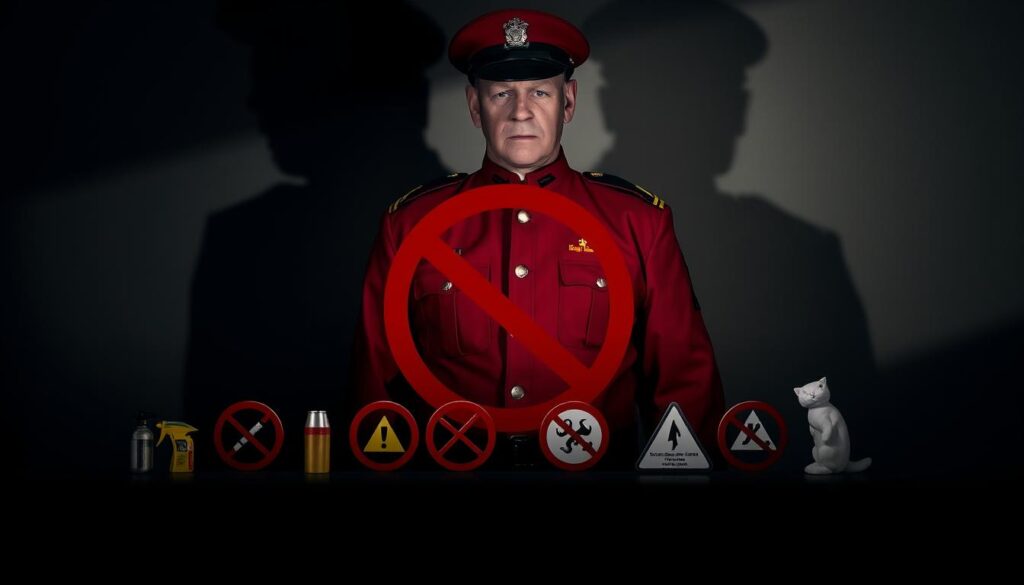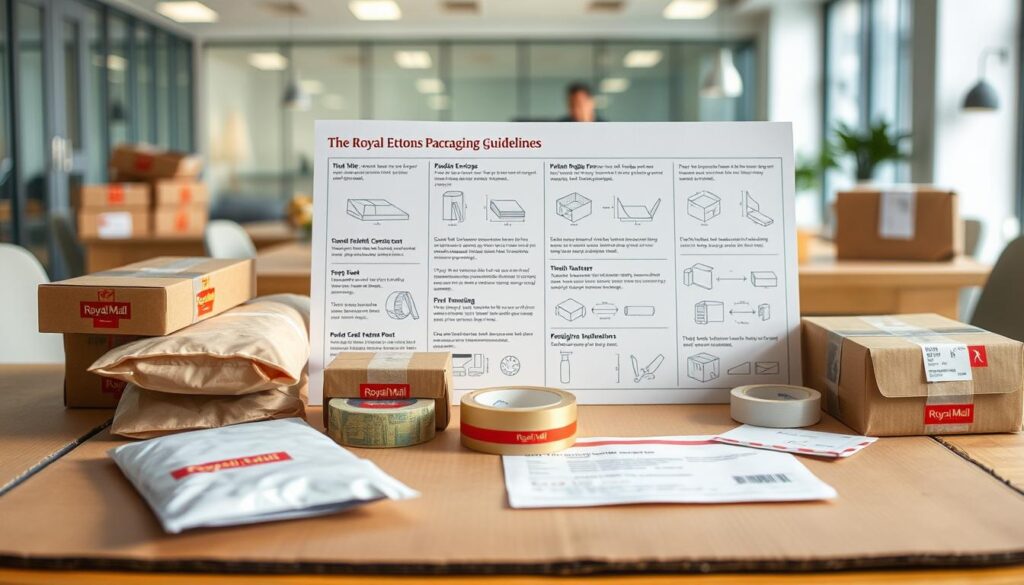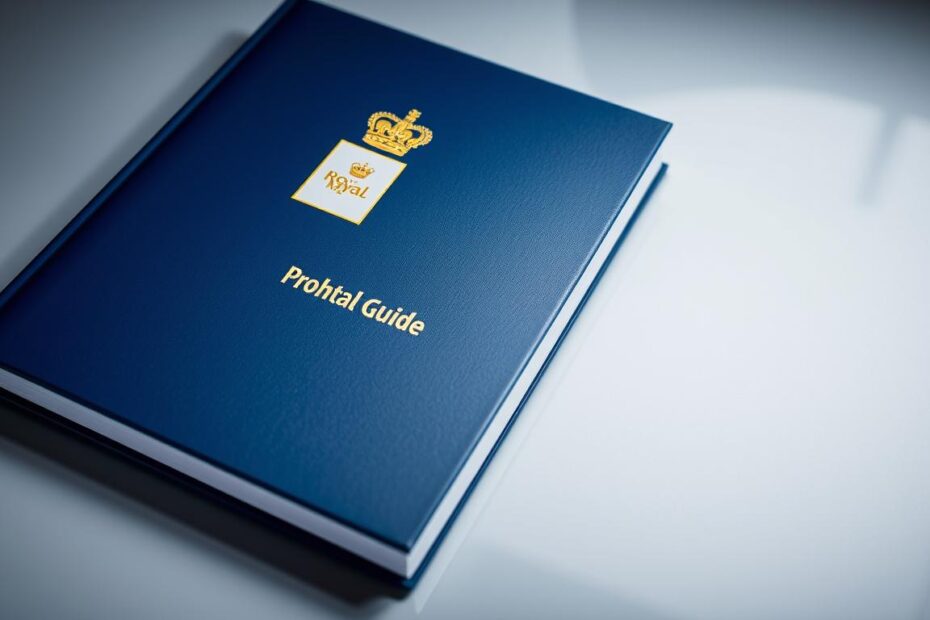Ever wondered what could get you in trouble with Royal Mail? Their list of banned items is full of surprises. It can catch even the most experienced shippers off guard.
Royal Mail has strict rules to keep their network safe. They make sure packages get to their destination safely. Their rules cover everything from dangerous materials to everyday items that might seem harmless.
It’s important to know these rules if you send packages. Learning about the banned items list helps you avoid big mistakes. You can also avoid legal trouble and delays that mess up your plans.
Key Takeaways
- Royal Mail has strict rules on shipping materials
- Some items are completely banned from the mail
- Shipping banned items can lead to big penalties
- Rules protect postal workers and package receivers
- Checking the rules before shipping prevents problems
Understanding the Royal Mail Prohibited Items List
When you ship packages with Royal Mail, you must follow their rules. Many packages are rejected or taken because they have items not allowed. This is because of postal rules.
Before you send a package, it’s important to know what can’t go in it. Royal Mail has a list of things you can’t send. This list helps keep everyone safe and follows the law.
What Constitutes a Prohibited Item?
Prohibited items are things that can’t be sent through the mail. They are often dangerous or illegal. These items include:
- Dangerous goods that pose physical risks
- Potentially explosive or flammable materials
- Illegal substances or contraband
- Hazardous chemical compounds
Why Royal Mail Bans Specific Items
There are many reasons why Royal Mail bans certain items. They do this to:
- Keep postal workers safe
- Stop damage to other packages
- Follow international shipping rules
- Keep shipping legal and right
Impact on Your Shipping Experience
Trying to ship banned items can cause big problems. You might face:
| Consequence | Potential Outcome |
|---|---|
| Package Rejection | Immediate return or disposal of shipment |
| Financial Penalties | Potential fines or shipping fees |
| Legal Implications | Possible investigation or legal action |
Knowing and following Royal Mail’s list helps you ship safely and legally. This makes sure your packages get where they need to go without trouble.
Categories of Prohibited Items
Royal Mail has rules for items you can’t send. Knowing these rules helps you avoid trouble and legal issues.
When you’re ready to ship, you’ll find three main categories to watch:
Dangerous Goods: High-Risk Materials
Dangerous goods are the most serious. They can be very risky during transport. Examples include:
- Explosives and pyrotechnics
- Flammable liquids and gases
- Corrosive chemicals
- Radioactive substances
Illegal Items: Strictly Forbidden Materials
Royal Mail doesn’t allow items that break the law. This includes:
- Counterfeit currency
- Controlled substances
- Stolen property
- Weapons without proper documentation
Restricted Materials: Conditional Shipping
Some items can be shipped but only under certain rules:
| Material Type | Shipping Conditions |
|---|---|
| Lithium Batteries | Must be properly packaged and declared |
| Magnetic Materials | Require special handling instructions |
| Pressurized Containers | Limited quantities permitted |
Understanding these categories helps you ship smoothly and follow the rules.
Common Prohibited Items You Should Know
It’s important to know what can’t be sent by Royal Mail. This is for safe and legal shipping. Royal Mail has strict rules about banned substances and items. Knowing these rules can save you time, money, and trouble.
Royal Mail’s banned substances include many important categories. Some items are banned because they are unsafe, can cause damage, or are illegal.
Firearms and Ammunition
Shipping firearms and ammunition through Royal Mail is very restricted. These items are under strict rules:
- Complete firearms are strictly prohibited
- Antique or deactivated weapons need special documents
- Ammunition can’t be sent by standard mail
Hazardous Materials
Hazardous materials are another big group of banned items. They include:
- Flammable liquids
- Compressed gases
- Corrosive chemicals
- Toxic substances
Things like aerosols, perfumes, and nail polish are often banned. This is because of their chemical makeup.
Live Animals
Royal Mail has strict rules for live animals. There are only a few exceptions:
- Mammals and most vertebrates are banned
- Some insects and invertebrates might be allowed under certain conditions
- You’ll need detailed permits and health certificates
Shipping live animals needs a lot of paperwork and special care.
| Category | Prohibited Items | Potential Exceptions |
|---|---|---|
| Firearms | Complete weapons | Deactivated antique firearms |
| Hazardous Materials | Flammable liquids | Some consumer products with restrictions |
| Live Animals | Mammals and vertebrates | Specific invertebrates |
Always check Royal Mail’s latest rules before shipping. Rules can change and differ based on the situation.
Exceptions to the Prohibited Items List
It can be hard to figure out the royal mail list of prohibited items. Royal Mail has strict rules, but there are some exceptions. Knowing these can save you time and avoid problems.
Not all restricted items are banned forever. Some can be shipped with the right care and papers. The uk mail prohibited items list has rules that let you send certain things.
Permitted Variations
Royal Mail lets you send some restricted items under certain rules. Here are important exceptions:
- Small amounts of dangerous goods with the right packaging
- Specific types of batteries when sealed properly
- Limited medical supplies with the right papers
- Certain electronic devices that meet safety standards
Special Declaration Requirements
Shipping special items needs careful planning. You must follow strict rules:
| Item Category | Documentation Needed | Packaging Requirements |
|---|---|---|
| Lithium Batteries | Safety certification | Sealed in protective case |
| Medical Devices | Medical approval form | Sterile packaging |
| Chemical Samples | Chemical composition report | Leak-proof containers |
Pro tip: Always talk to Royal Mail customer service for your special items. Rules can change, so it’s important to stay up to date.
How to Check if an Item is Prohibited
Shipping rules can be hard to understand. This is true for dangerous goods Royal Mail might not allow. Knowing what can’t be sent in the post in the UK can save you time and money.
Royal Mail has many tools to help you check if your package is okay. It’s important to know what you can and can’t send to avoid problems.
Online Resources for Verification
The Royal Mail website is your best friend for checking items. Here’s how to use it:
- Go to the Royal Mail website
- Find the Prohibited and Restricted Items section
- Look up your item in their big database
- Read all about Royal Mail’s rules for dangerous goods
Customer Service Support
If the website is hard to understand, Royal Mail’s customer service can help. They know a lot about shipping and can answer your questions.
You can reach out in several ways:
- Call them
- Use online chat
- Send an email
- Visit a local post office
Using these tools, you can make sure your packages are okay to send. This way, you can avoid any shipping issues.
Consequences of Shipping Prohibited Items
Shipping items not allowed in the UK through Royal Mail can cause big problems. It’s not just about your package being turned back. It can lead to serious issues.

Trying to send items not allowed by Royal Mail can lead to many bad things:
- Immediate package seizure
- Potential legal prosecution
- Significant financial penalties
- Permanent service suspension
Legal Penalties
Breaking Royal Mail’s rules can lead to legal trouble. You might get:
- Substantial monetary fines
- Criminal charges for severe violations
- Potential court appearances
Delays and Returns
Shipping items not allowed can also cause delays. Your package will likely face:
- Immediate routing to inspection
- Extended processing times
- Guaranteed return to sender
- Potential permanent record of violation
To avoid trouble, always check Royal Mail’s rules before sending. It’s easier to prevent problems than fix them later.
Shipping Alternatives for Prohibited Items
It can be upsetting to find out Royal Mail won’t ship some items. But, there are other ways to send things that Royal Mail can’t.
- Specialized courier services
- International shipping providers
- Local freight and logistics companies
- Dedicated hazardous materials transporters
Specialized Mailing Services
Some courier services are experts at sending restricted items. They have special permits and gear for items Royal Mail can’t handle.
| Service Type | Typical Restrictions Handled | Additional Cost |
|---|---|---|
| Hazardous Materials Shipping | Chemicals, Batteries | $50-$200 |
| Specialized Freight | Industrial Equipment | $100-$500 |
| International Restricted Cargo | Scientific Samples | $75-$250 |
Local Regulations and Options
Local shipping rules can change. Check with regional transportation authorities to see what’s allowed in your area.
Make sure you have the right documents and follow safety rules before shipping restricted items.
Best Practices for Packaging Your Items
When you ship items with Royal Mail, you must pay close attention to how you package and label them. Knowing how to package right helps avoid problems with items that are not allowed. The way you package your items can greatly affect if they arrive safely and without trouble.

To keep your items safe while they’re being shipped, you need to follow some important steps. Choosing the right materials for packaging is key to keeping your shipment safe.
Proper Labeling Techniques
Good labeling is very important when you ship with Royal Mail. Clear labels help avoid delays or problems because of items that are not allowed.
- Use waterproof labels with clear, legible text
- Include complete sender and recipient information
- Mark fragile packages with appropriate warning stickers
- Declare contents accurately to avoid royal mail banned substances issues
Secure Packaging Tips
How you package your items can help prevent damage or rejection during shipping.
- Choose sturdy boxes or padded envelopes
- Use bubble wrap for delicate items
- Seal packages completely with strong packing tape
- Avoid excess empty space inside packages
Pro tip: If you’re unsure about packaging, call Royal Mail customer service for help with items that might be restricted.
Staying Updated on Changes to the List
It’s important to keep up with the royal mail list of prohibited items. Rules about dangerous goods royal mail can change fast. So, it’s key to know the latest shipping rules.
Shipping rules can change often. Royal Mail updates its list of banned items. This is to keep everyone safe and follow new laws.
Effective Monitoring Strategies
- Check the Royal Mail official website regularly
- Subscribe to official email newsletters
- Follow Royal Mail’s social media channels
- Sign up for postal service update alerts
Communication Channels for Updates
| Update Method | Frequency | Reliability |
|---|---|---|
| Official Website | Real-time | High |
| Email Newsletters | Monthly | Medium |
| Social Media | Immediate | High |
Using these tips, you’ll always know about new shipping rules. Being up to date avoids problems and legal issues.
Frequently Asked Questions
Shipping items that are not allowed can be tricky. Royal Mail has rules for items you can’t send in the UK. It’s important to follow these rules to avoid problems.
Knowing what can happen and how to appeal can help. This way, you can avoid surprises when sending packages.
What Happens If You Ship a Prohibited Item?
Shipping items not allowed in the UK can lead to different outcomes:
- Package immediate return to sender
- Potential financial penalties
- Temporary suspension of mailing privileges
- Legal consequences for serious violations
Navigating the Appeal Process
If you think an item is wrongly banned, Royal Mail has a way to appeal:
- Submit a formal written appeal
- Provide detailed documentation
- Request a thorough review
- Await official response
Royal Mail’s customer service can help with your specific situation.
| Appeal Stage | Required Action | Typical Response Time |
|---|---|---|
| Initial Review | Written explanation | 5-7 business days |
| Detailed Investigation | More documentation | 10-14 business days |
| Final Decision | Official decision | 15-21 business days |
Pro tip: Always check items against the current banned list to avoid problems.
Conclusion
Understanding Royal Mail’s rules for sending items can be tough. But, knowing the rules helps your packages get to their destination safely. It’s key for sending mail or packages across borders.
Every package you send helps keep postal services safe and efficient. Knowing what can’t be sent helps protect your package and others. Royal Mail’s rules stop dangers and make sure packages arrive on time.
If you’re unsure about an item, check if it’s okay to send. Use online tools, talk to customer service, and look at this guide. Following Royal Mail’s rules shows you care about safety and helps everyone.
Being a careful sender is more than just following rules. It’s about making sure your packages are safe and reliable. Stay informed and you’ll be great at sending packages with Royal Mail.
